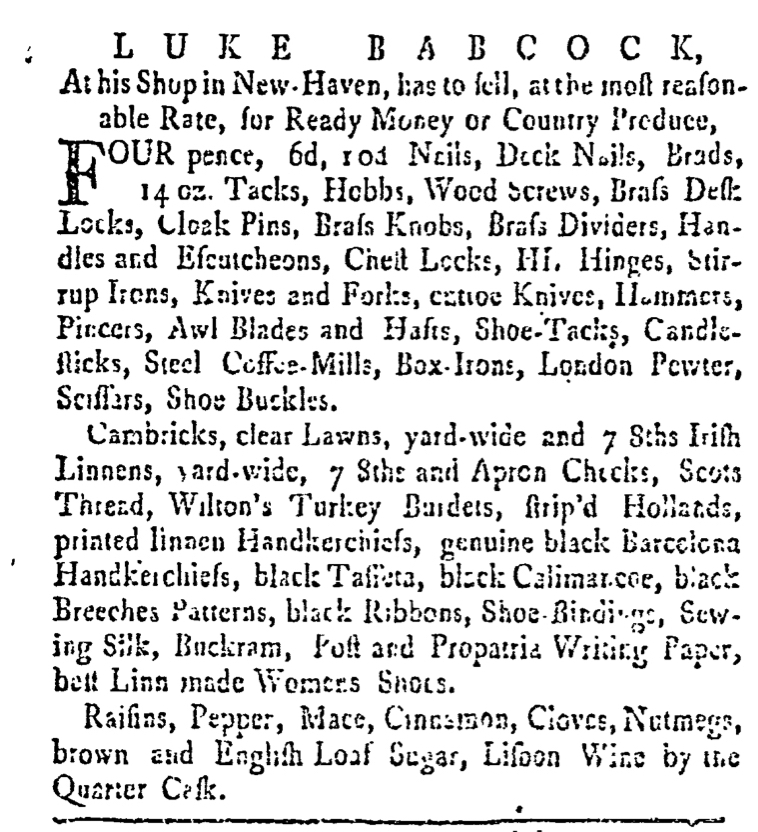What was advertised in a colonial newspaper 250 years ago today?

“LUKE BABCOCK, At his Shop in New Haven, has to sell … Nails, … Irish Linnens, … Raisins.”
Shopkeeper Luke Babcock’s list-style advertisement would have looked very familiar to colonial consumers. It did not elaborate much on the merchandise he stocked, except to not that Babcock sold his wares “at the most reasonable Rate.” The variety of goods – everything from “Brass Knobs” to “genuine black Barcelona Handkerchiefs” to “Lisbon Wine by the Quarter Cask” – comprised the advertisement’s primary marketing appeal, promising potential customers an assortment of choices. So many advertisers used this method of promoting their goods in eighteenth-century America that at a glance this advertisement appears indistinguishable from so many others.
On closer examination, however, it appears that Babcock introduced an innovation not readily apparent in advertisements published by many of his counterparts and competitors. His advertisement was carefully organized. Similar types of products were grouped together rather than appearing in an undifferentiated and disorienting list. Babcock first named hardware items, then textiles, and, finally, groceries. To make it even easier to navigate the advertisement, each major category had its own paragraph.
While this may seem like such common sense today that it should merit no comment, the format of this advertisement must be considered in the context of other eighteenth-century advertisements and the printing practices that shaped them. Babcock’s marketing may not have been flashy, but he attempted to make it more effective by helping readers better grasp the extent of his offerings and find merchandise that most interested them. It’s even possible that such careful organization on the printed page helped potential customers to imagine the layout of his shop, envisioning themselves examining the merchandise available in the section where hardware was stocked or in another area of the shop where textiles were displayed. Where other list-style advertisements often presented chaos, Babcock brought order to his goods, guiding consumers to the items they wanted or needed.
